Plastic waste is a growing concern in the beauty industry. Countless bottles, tubes, and containers end up in landfills and oceans each year. As consumers become more environmentally conscious, many of us are looking for ways to reduce our plastic footprint without sacrificing our skincare and beauty routines.
Making simple swaps and adopting new habits can significantly decrease the amount of plastic waste generated from our daily beauty regimens.
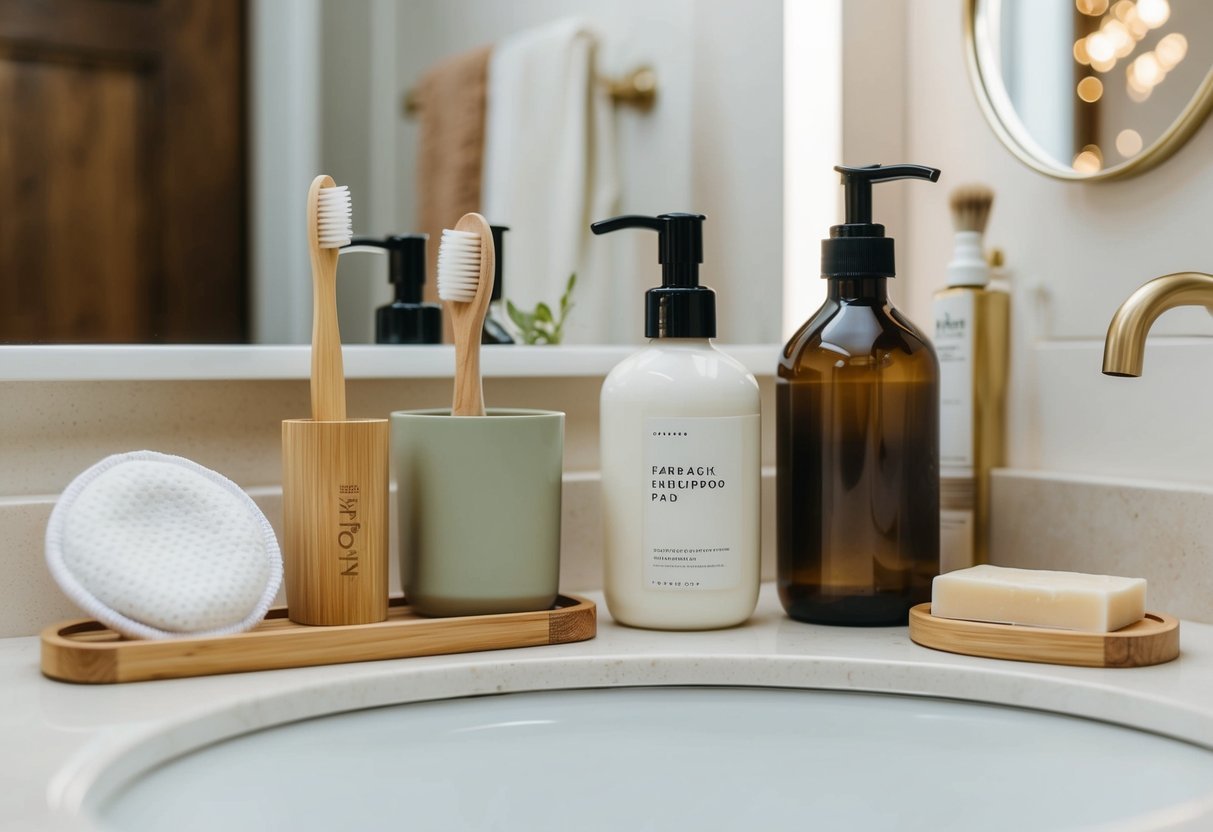
We’re excited to share some practical tips for creating a more eco-friendly beauty routine. These easy changes not only help protect the environment but can also introduce us to new, innovative products that are just as effective as their plastic-packaged counterparts. Let’s explore how we can pamper ourselves while being kinder to the planet.
1) Use bamboo makeup brushes
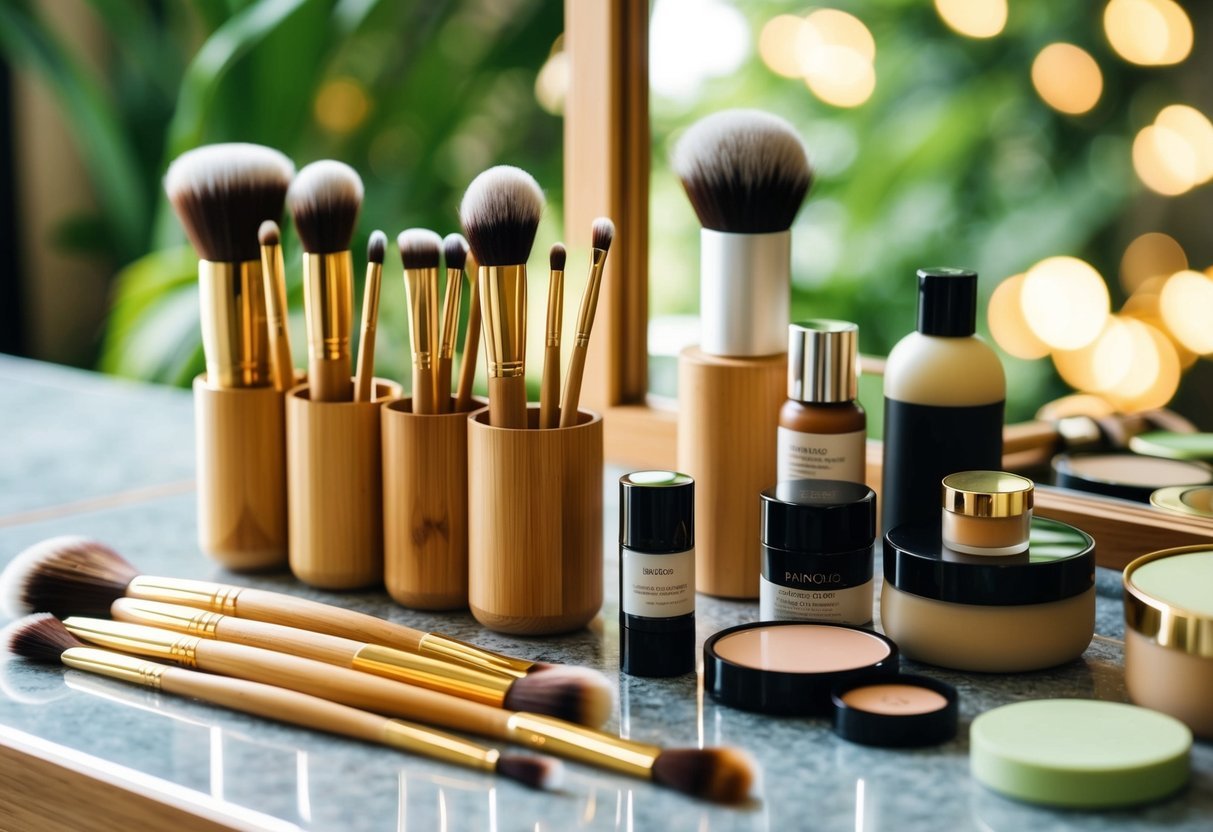
We love the eco-friendly appeal of bamboo makeup brushes. These natural beauties offer a sustainable alternative to plastic-handled brushes without sacrificing quality or performance.
Bamboo handles feel great in our hands and give our makeup routine an organic touch. The bristles are often just as soft and effective as traditional brushes, allowing for smooth application of our favorite products.
We’ve found bamboo brushes work well for applying everything from foundation and blush to eyeshadow. They’re versatile enough to use with powders, creams, and liquids.
Many bamboo brush sets come in plastic-free packaging too, further reducing waste. We appreciate brands that use recycled or biodegradable materials for the brush containers.
Caring for bamboo brushes is simple. We wash them gently with mild soap and let them air dry. With proper care, they can last for years, making them a smart long-term investment in our beauty arsenal.
Switching to bamboo brushes is a small but meaningful step toward a more earth-friendly makeup routine. It’s an easy change that helps us feel good about our choices while still achieving flawless looks.
2) Buy refillable beauty products
We can make a big impact by choosing refillable beauty products. Many brands now offer reusable containers that we can refill again and again.
For our skincare routine, we might try refillable moisturizers or serums. Some come in sleek glass jars or metal tins that look great on our bathroom shelves.
When it comes to makeup, refillable compacts and lipstick tubes are gaining popularity. We can simply pop in a new pan or bullet when we run out.
Even deodorant is going green with refillable options. Stainless steel cases house natural formulas that we can easily top up.
Hair care is joining the refill revolution too. We’re seeing shampoo and conditioner bars that eliminate plastic bottles altogether.
These eco-friendly choices help us cut down on packaging waste. Plus, they often contain pure, organic ingredients that are kind to our skin and the planet.
By embracing refillable products, we’re taking a small but meaningful step towards a more sustainable beauty routine. It’s an easy way for us to look good and feel good about our choices.
3) Switch to bar soap instead of liquid
Bar soap is a simple yet effective way to reduce plastic waste in our beauty routines. We can easily find these eco-friendly alternatives in most stores, often packaged in recyclable paper or cardboard.
Bar soaps come in a variety of natural formulations. Many are made with organic ingredients like coconut oil and essential oils. These pure, plant-based options can be gentler on our skin than their liquid counterparts.
We’ll love how bar soaps lather up nicely and leave our skin feeling clean and refreshed. They’re perfect for use in the shower or at the sink. Plus, they tend to last longer than liquid soap, giving us more bang for our buck.
By making this small change, we’re taking a big step towards a more sustainable lifestyle. We’re cutting down on those plastic bottles that often end up in landfills or oceans. It’s a win for our skin and the planet!
4) Choose glass over plastic bottles
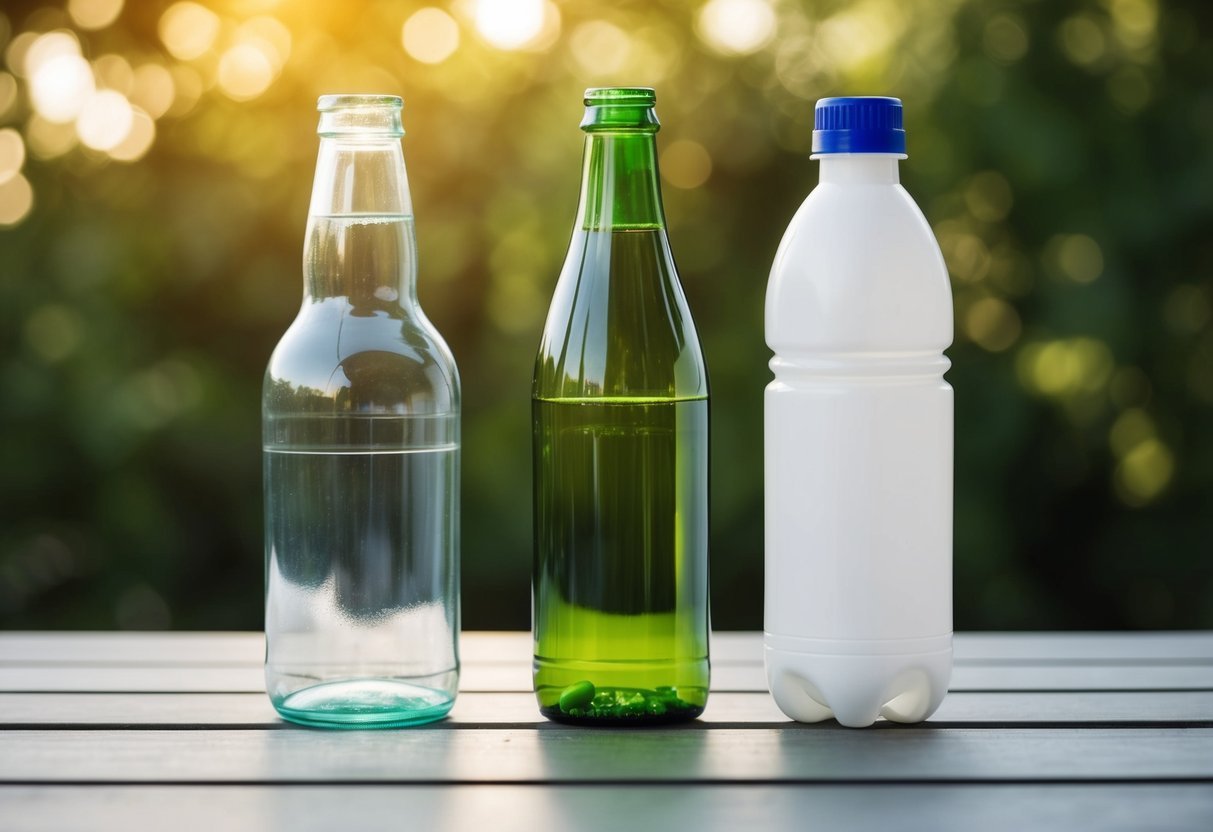
We can make a big impact by switching to glass containers for our beauty products. Glass bottles look sleek and elegant on our bathroom shelves. Plus, they’re better for the environment than plastic.
Glass is 100% recyclable and can be reused many times. It doesn’t leach chemicals into the natural products inside. This keeps our serums, oils, and creams pure and potent.
Many organic beauty brands now offer their formulas in glass packaging. We love how these earth-friendly bottles protect delicate ingredients from light and air. The contents stay fresh longer too.
When shopping, we can look for toners, face oils, and body lotions in glass containers. Some brands even offer refill options to cut down on waste. It’s an easy way to green up our routines.
Glass feels more luxurious in our hands during our self-care rituals. The weight and coolness add a touch of indulgence to our daily regimens. We’re pampering ourselves and the planet at the same time.
5) DIY face masks using pantry items

We can easily whip up nourishing face masks using simple ingredients from our kitchen. These DIY treatments are a great way to pamper our skin while avoiding plastic packaging.
One of our favorite recipes combines honey, yogurt, and oatmeal. The honey moisturizes, yogurt gently exfoliates, and oatmeal soothes irritation. We just mix equal parts of each and apply for 15 minutes.
For a brightening mask, we mash up half an avocado with a tablespoon of cocoa powder. The healthy fats in avocado leave our skin super soft, while cocoa gives a natural glow.
Green tea lovers can try mixing matcha powder with a dollop of raw honey. This combo delivers antioxidants and fights inflammation. We leave it on for about 10 minutes before rinsing.
When our skin needs extra hydration, we reach for mashed banana and a splash of olive oil. It’s ultra-moisturizing and packed with vitamins.
These homemade masks let us treat our skin naturally while cutting down on single-use plastic tubes and jars. Plus, they’re fun to make!
6) Opt for biodegradable makeup wipes
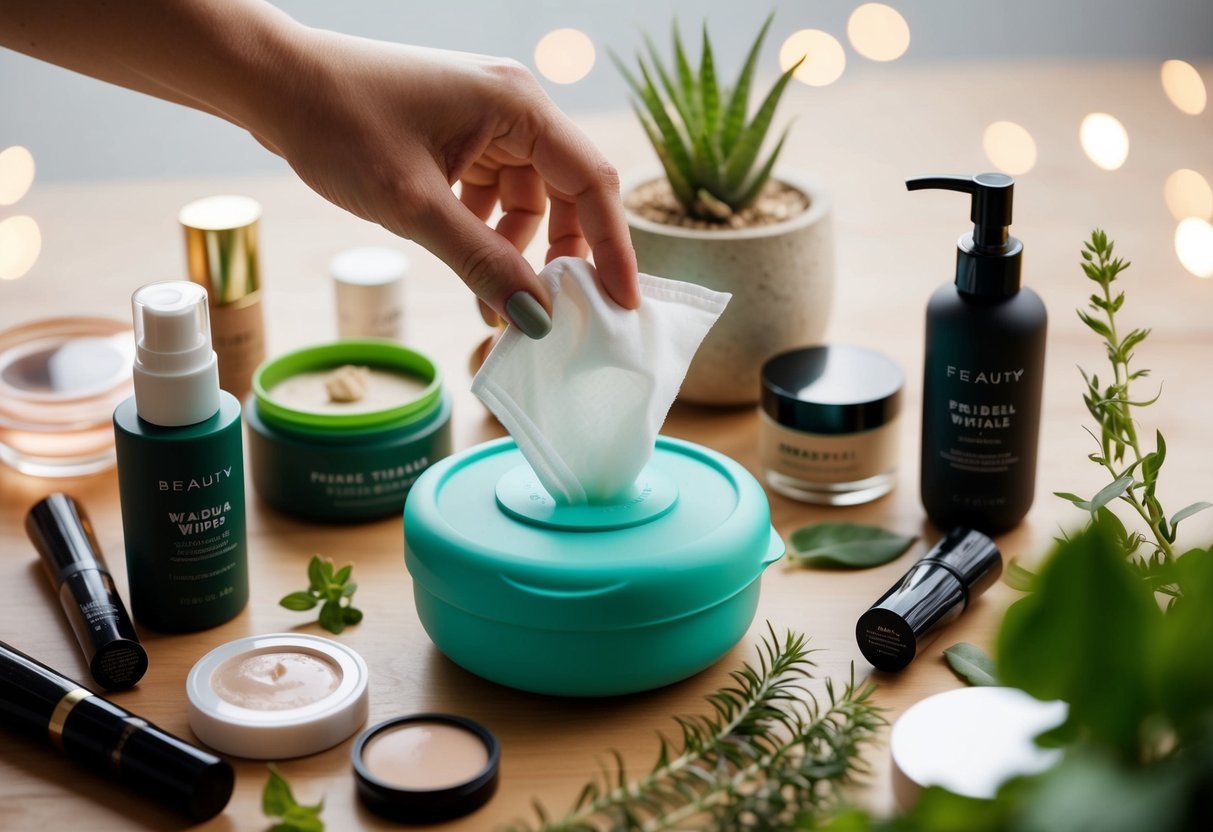
Let’s face it, sometimes we’re too tired to go through a full cleansing routine. That’s where makeup wipes come in handy. But traditional wipes can be awful for the environment.
The good news? We can now find biodegradable options that break down naturally. These eco-friendly wipes are often made from plant-based materials like bamboo or cotton.
Many brands are jumping on this green bandwagon. We’ve seen wipes infused with natural ingredients like aloe vera or chamomile. They’re gentle on our skin and the planet.
Some companies even offer compostable packaging for their wipes. It’s a win-win situation – we get clean faces and a cleaner Earth.
Remember, even biodegradable wipes shouldn’t be flushed. They’re best disposed of in compost bins or regular trash. Every small step counts in our journey towards a more sustainable beauty routine.
Understanding Plastics in Beauty Products
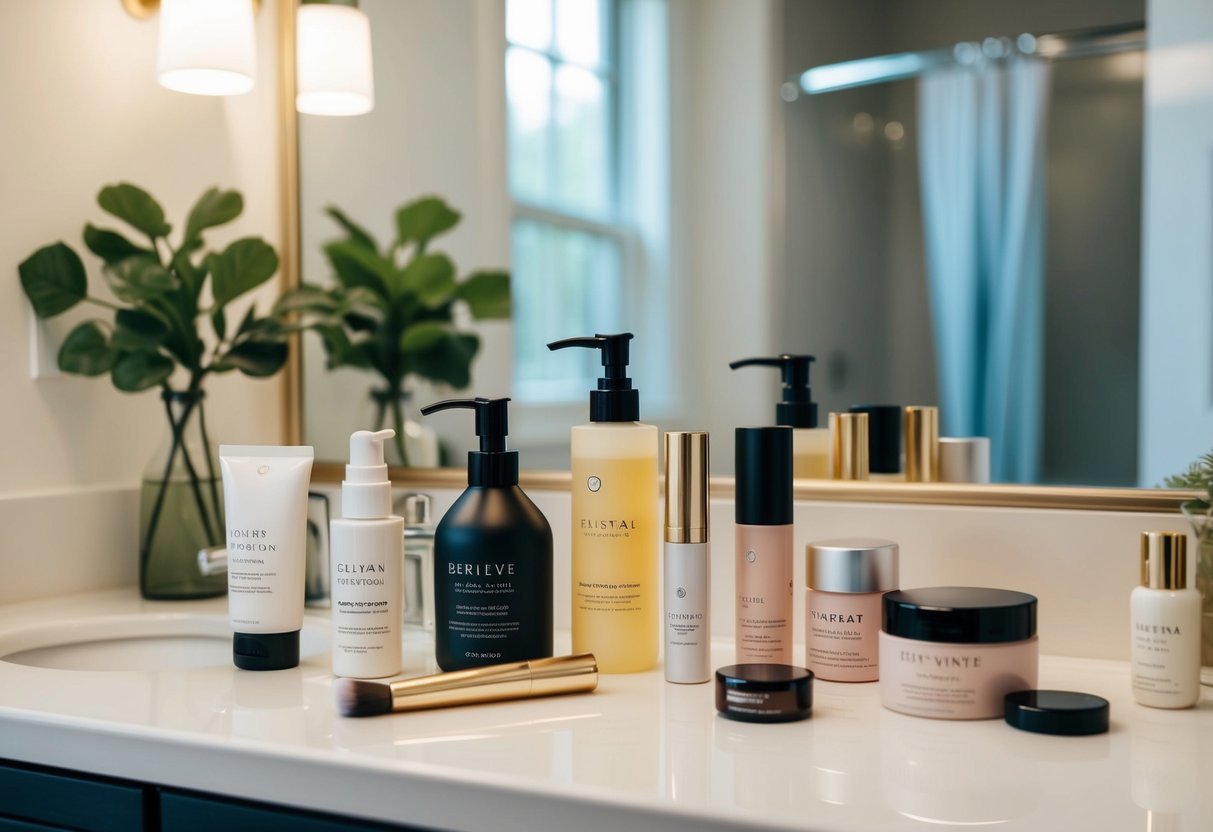
Plastic is ubiquitous in our beauty routines. We often overlook how much of it surrounds our skincare and makeup products. Let’s explore the types of plastics used and their environmental impact.
Types of Plastics Commonly Used
PET (polyethylene terephthalate) is a popular choice for bottles and jars. It’s lightweight and recyclable, but not infinitely so. HDPE (high-density polyethylene) is another common plastic, often used for larger containers like shampoo bottles.
PP (polypropylene) is found in bottle caps and some tubes. It’s durable and heat-resistant. LDPE (low-density polyethylene) is flexible, making it ideal for squeeze bottles and sachets.
Pumps and droppers often contain multiple plastic types, making them tricky to recycle. Some brands use bioplastics, which are derived from renewable sources but may not be as eco-friendly as they seem.
Environmental Impact of Plastic Waste
Beauty product plastics contribute significantly to ocean pollution. Many items are too small to be recycled and end up in landfills or waterways. Microplastics from exfoliating beads pose a particular threat to marine life.
The production of plastic beauty packaging releases greenhouse gases. Even when recycled, plastic degrades in quality, eventually becoming waste. Single-use items like sheet masks and cotton pads add to the problem.
Some plastics leach harmful chemicals into the environment. BPA and phthalates, found in some beauty product packaging, can disrupt ecosystems and human health. Choosing plastic-free alternatives helps protect our planet and our bodies.
Choosing Plastic-Free Alternatives
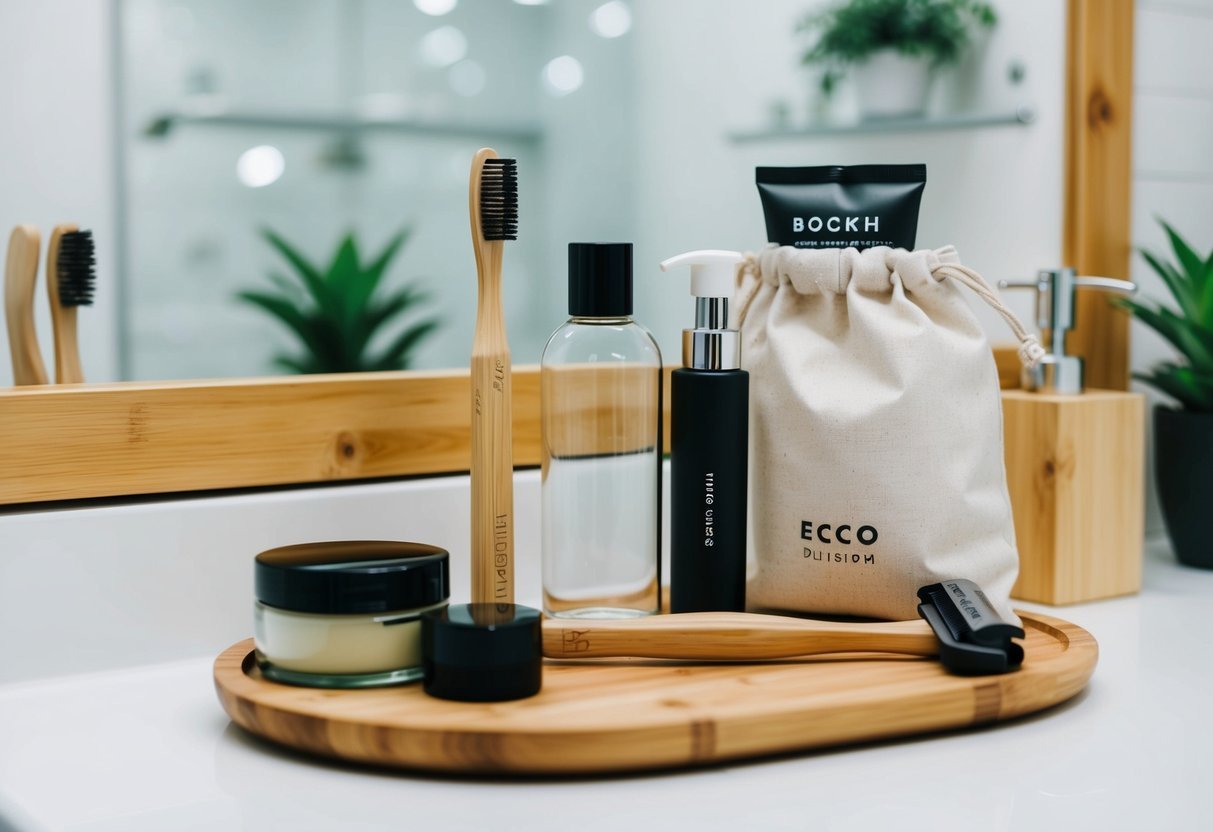
Swapping out plastic-filled beauty products for eco-friendly options can make a big difference. We’ve found some great alternatives that are kind to both our skin and the planet.
Solid Shampoo and Conditioner Bars
Solid bars are a game-changer for our hair care routine. They come package-free or in minimal, recyclable wrapping. These concentrated bars last much longer than liquid versions – one bar can replace 2-3 bottles! We love how they lather up nicely and leave our hair feeling clean and nourished.
Many brands offer bars for different hair types. Some even include natural ingredients like essential oils or herbs for added benefits. As a bonus, solid bars are perfect for travel. No more worrying about leaky bottles in our luggage!
Refillable Beauty Products
Refillable options are popping up everywhere in the beauty world. We can now get everything from foundation to face cream in containers we can use again and again.
Some shops let us bring our own jars to fill up. Others offer sleek refillable packaging we can send back when empty. We’re big fans of brands that use glass or metal containers instead of plastic.
Refills often cost less than buying a whole new product each time. It’s a win-win – we save money and cut down on waste. Plus, many refillable products use pure, organic ingredients that are great for our skin.
Brands Leading the Charge in Sustainability
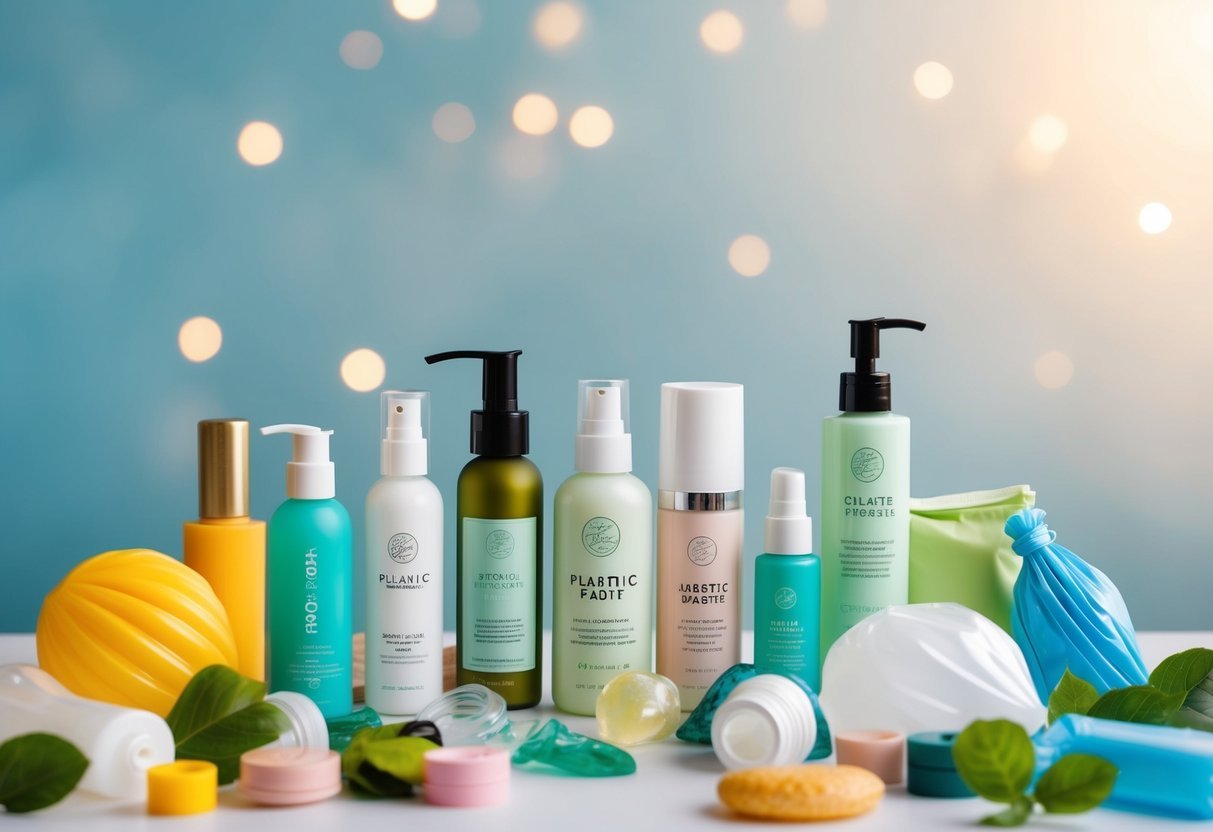
Many beauty companies are stepping up to tackle plastic waste. They’re rethinking packaging and embracing eco-friendly practices. Let’s explore some innovative approaches and certifications to watch for.
Eco-Friendly Packaging Innovations
LUSH Cosmetics has been a trailblazer in package-free products. Their solid shampoo bars and naked cleansers eliminate the need for bottles. We love how one bar can last up to 80 washes!
REN Clean Skincare uses recycled ocean plastic in their bottles. It’s pretty cool – they’re helping clean up beaches while giving us great skincare.
Seed Phytonutrients caught our eye with their shower-friendly paper bottles. They’re made from recycled materials and can be easily recycled again.
Certifications to Look For
When shopping, keep an eye out for these trustworthy certifications:
- Cradle to Cradle: This stamp means products are made with safe materials that can be endlessly recycled.
- B Corp: Companies with this cert balance profit with purpose, considering their impact on workers, customers, and the environment.
- ECOCERT: Look for this on organic and natural cosmetics. It ensures ingredients are responsibly sourced.
Biossance stands out with their EWG Verified seal. It guarantees their products are free from EWG’s chemicals of concern.
Tata Harper boasts multiple organic certifications. Their commitment to clean, green beauty is impressive from farm to face.
Frequently Asked Questions
Adopting eco-friendly beauty habits can be confusing. We’ve compiled some common questions to help clarify ways to reduce plastic waste in your routine. From choosing refillable containers to opting for solid shampoo bars, there are numerous strategies available to help reduce waste in beauty routines. Additionally, being mindful of product packaging and supporting brands that prioritize sustainability can make a significant difference. With a little effort and awareness, you can enjoy your beauty regimen while being kinder to the environment.
How can I swap out plastic-heavy products with eco-friendly alternatives in my beauty routine?
We love using bamboo makeup brushes instead of plastic ones. They’re durable and biodegradable.
Switching to bar soap and shampoo bars eliminates plastic bottles. Meanwhile, reusable cotton rounds replace disposable makeup wipes nicely.
What are some beauty brands that prioritize sustainable packaging?
Lush offers many “naked” products without packaging. Elate Cosmetics uses bamboo compacts. Kjaer Weis has beautiful refillable metal containers. Axiology sells plastic-free lip products in paper tubes.
Are there any DIY beauty product recipes that help minimize plastic use?
We enjoy whipping up face masks with kitchen ingredients like honey, avocado, and oatmeal.
Sugar scrubs are easy to make with oil and sugar. Meanwhile, coconut oil works great as a moisturizer or makeup remover.
What should I look for in products to ensure I’m choosing more sustainable options?
Glass or metal containers are more eco-friendly than plastic. Also, look for refillable products to reduce waste.
Check for certifications like B Corp or Leaping Bunny. Choose items with minimal or plastic-free packaging.
Can I recycle my beauty product containers, and what’s the best way to do it?
Many containers can be recycled, but rules vary by location. Rinse containers before recycling.
Some brands have take-back programs for empties. Meanwhile, TerraCycle accepts hard-to-recycle beauty packaging.
In what ways can I influence the beauty industry to be more environmentally conscious?
We can support brands with sustainable practices.
Share feedback with companies about packaging concerns.
Ask retailers to stock more eco-friendly options.
Spread the word about plastic-free alternatives on social media.

